All the best of BIAF 2024 preview. The best galleries gather in Florence
Fabrizio Moretti, secretary general of the Florence Biennale Internazionale dell’Antiquariato, promised it at the presentation, reiterated it in his interview for Finestre sull’Arte, and confirmed it this morning at the press preview of the Biennale’s 33rd edition: the 2024 edition will be one of the most beautiful ever. And it’s hard to blame him after taking a tour of the 80 or so booths that gather many of the world’s best art dealers, who meet every two years on the banks of the Arno River, at Palazzo Corsini, to present to the public, collectors, and museums the best that antiques have to offer, including unseen, new, top-notch pieces that many hope to see in some Italian museum. The parterre of directors is already packed and thepress office reveals that tonight’s gala dinner will include, among the more than 800 guests invited by the antiquarians, Thomas Clement Salamon, director of the National Galleries of Ancient Art at Palazzo Barberini; Eike Schmidt, director of the Capodimonte Museum and Real Bosco; Davide Gasparotto, curator of the Getty Museum in Los Angeles; Anne-Lise Desmas, modern sculpture expert from the Getty Museum in Santa Monica; curators from the National Gallery in London; and several others.
After all, BIAF is the stage for the world’s most prestigious collecting: to look at what exhibitors have brought is to see up close what will soon end up in the homes of the wealthiest collectors in Italy, Europe and beyond, or on a museum wall. Still, there is no shortage of pieces for those who want to get closer to this world. In the coming days, on these pages, we will publish in-depth features on the key pieces of this edition of the BIAF but also on works suitable for those approaching more affordable but still high quality collecting.
And quality is what BIAF never lacks. This year, then, the level is really high. A first jolt comes immediately at the beginning of the itinerary, after the entrance to Palazzo Corsini: Carlo Orsi ’s booth presents the biennial public with a “Titian rediscovered,” as per the title of the publication accompanying this rediscovery, a Madonna and Child with Saint Magdalene executed with intervention by Girolamo Dente, made known by Wilhelm Suida in 1952 and resurfaced this year after traces of it had been lost. Still at Orsi’s, not to be missed is Frans Floris’s Susanna and the Old Men recently shown at the exhibitions on Rubens in Genoa in 2023 and on music at the Labirinto della Masone in Fontanellato this year, and the same can be be said for the ceramic Fruttiera with grapes, plums and pears that is a splendid essay of Fede Galizia’s naturamortist talents (the work was, moreover, exhibited at the first monographic exhibition on the artist, held in 2021 in Trento). Opposite, Gian Enzo Sperone offers an interesting selection of 20th-century art in which two pencil studies by Andy Warhol, both from the 1970s (a Mao and a Hammer and Sickle), stand out. Art from the last century also at the nearby Agnews booth: lovers of futurism will not want to miss a painting by Tullio Crali from the 1970s that replicates the very famous Incuneandosi nell’abitato from 1939 . But that’s not the only reason it’s worth lingering in the London antiquarian’s booth: also worth seeing is the Madonna and Child by Ortolano, a fine panel from the early 16th century. Also from England, Dickinson shows the public a drawing believed to be the work of Michelangelo based on the opinions of scholars such as Paul Joannides, David Ekserdjian, Timothy Clifford and Miles Chappell. This Study of Jupiter, which would be precocious according to experts (circa 1490: Michelangelo was fifteen years old at the time), is being presented for the first time in Florence and is sure to thrill critics and audiences alike. Also from Dickinson, a not-so-common oil on slate by Pasquale Ottino, one of the most interesting talents of seventeenth-century Verona, is worth mentioning: it is a Madonna and Child with Saints , and the asking price, just 16,000 euros, should entice many collectors. Dys44 Lampronti Gallery brings its workhorses, namely vedutisti, to Florence: a Capriccio di piazza San Marco by Canaletto stands out in particular, but the booth also features paintings by Bernardo Bellotto, Michele Marieschi and others.

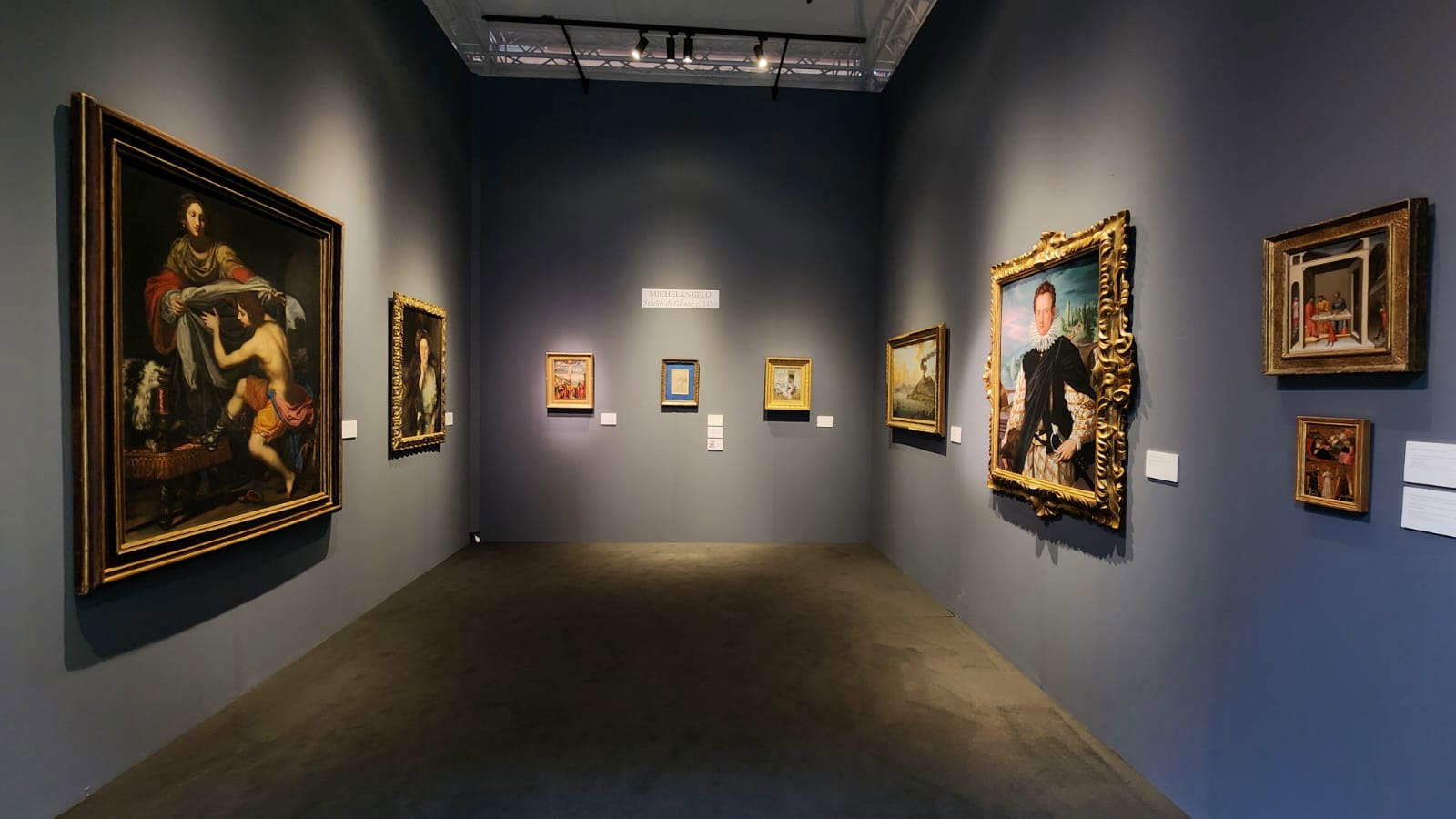
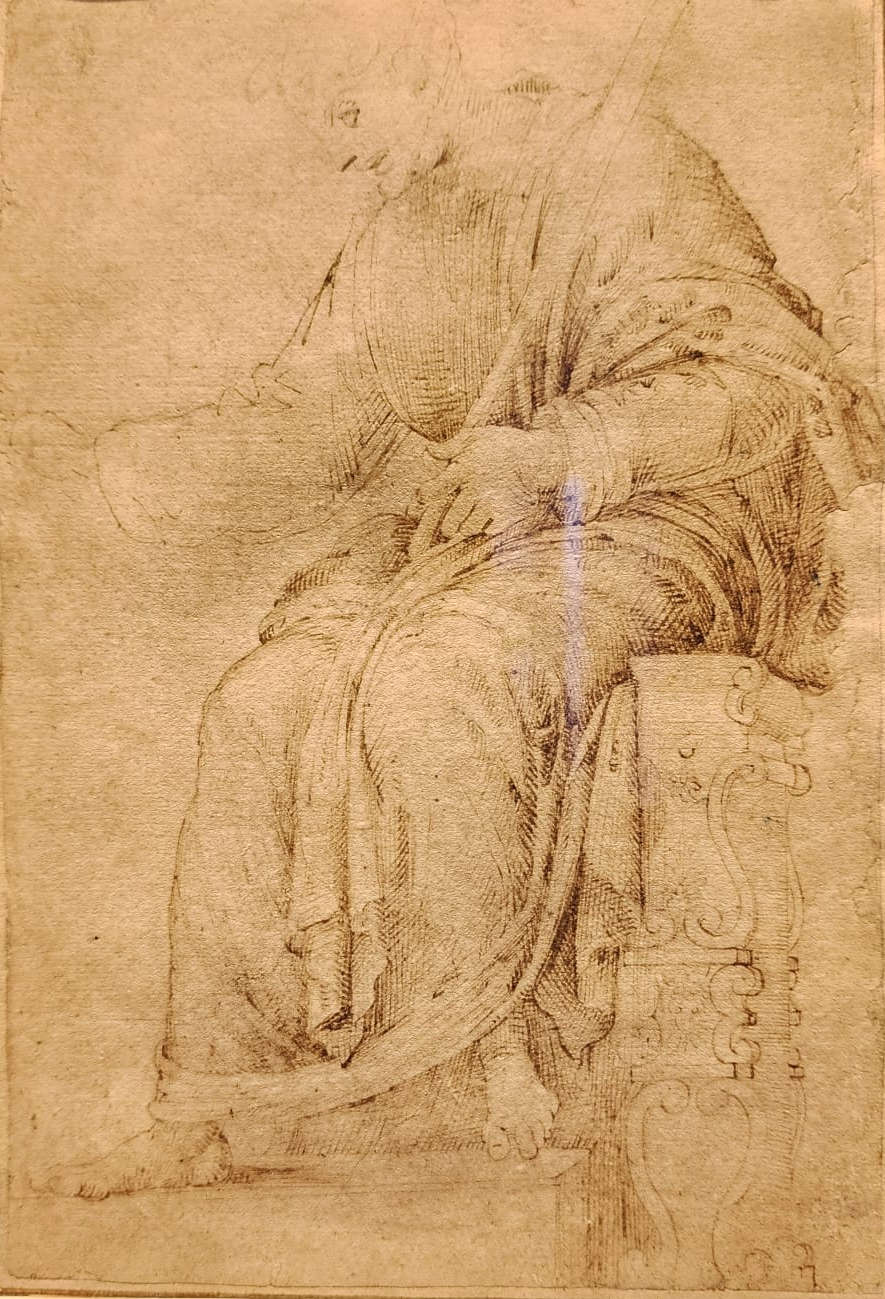


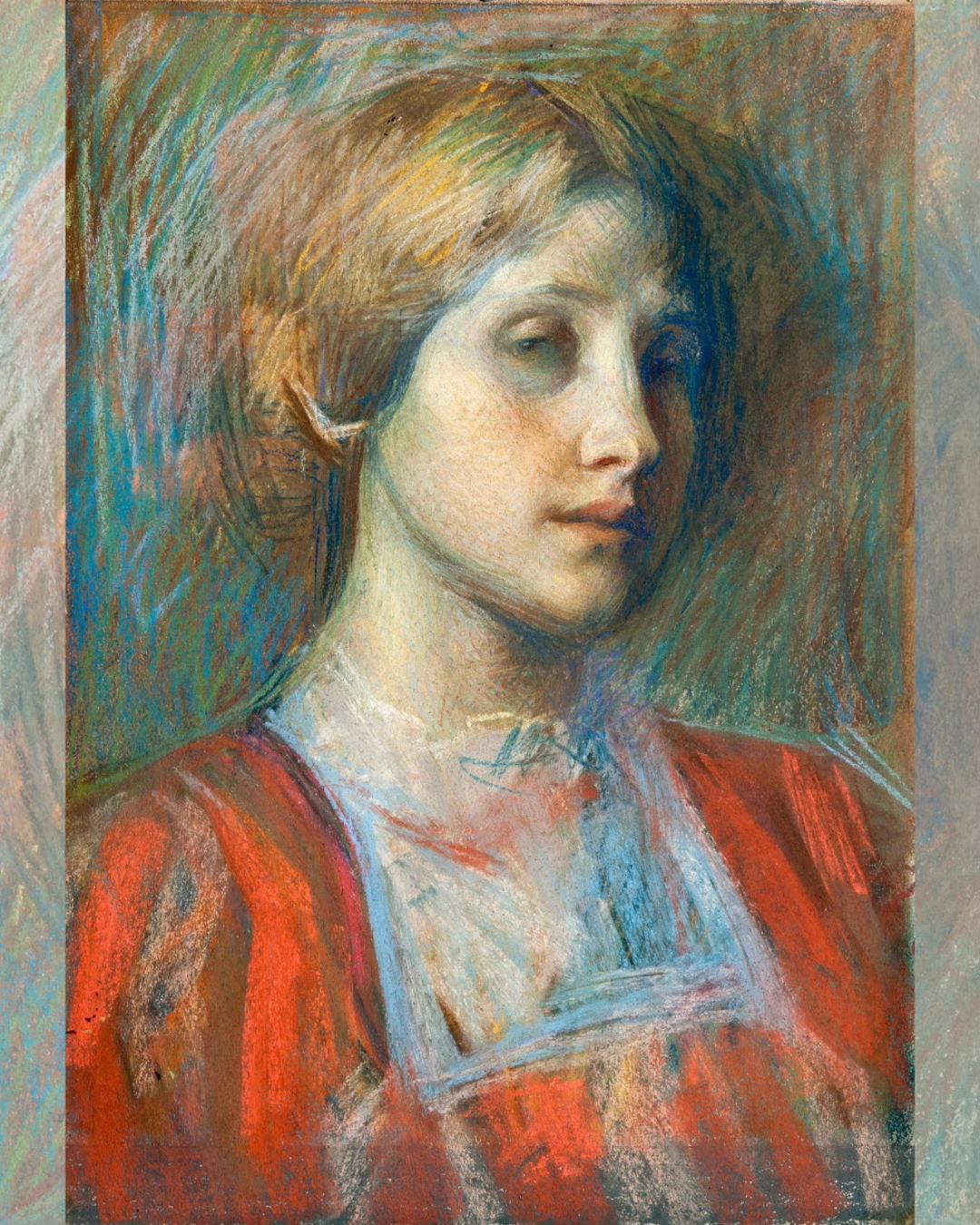
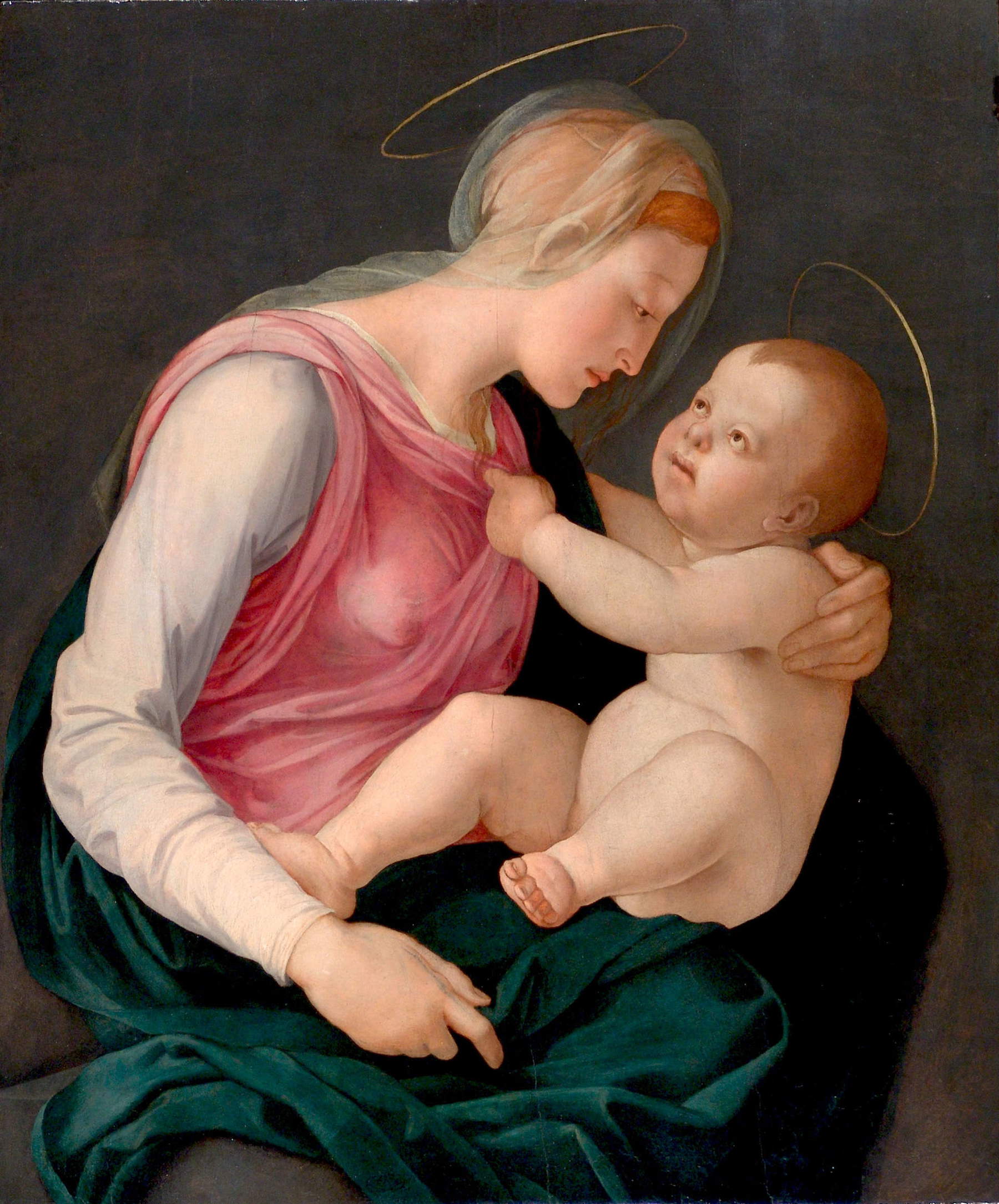




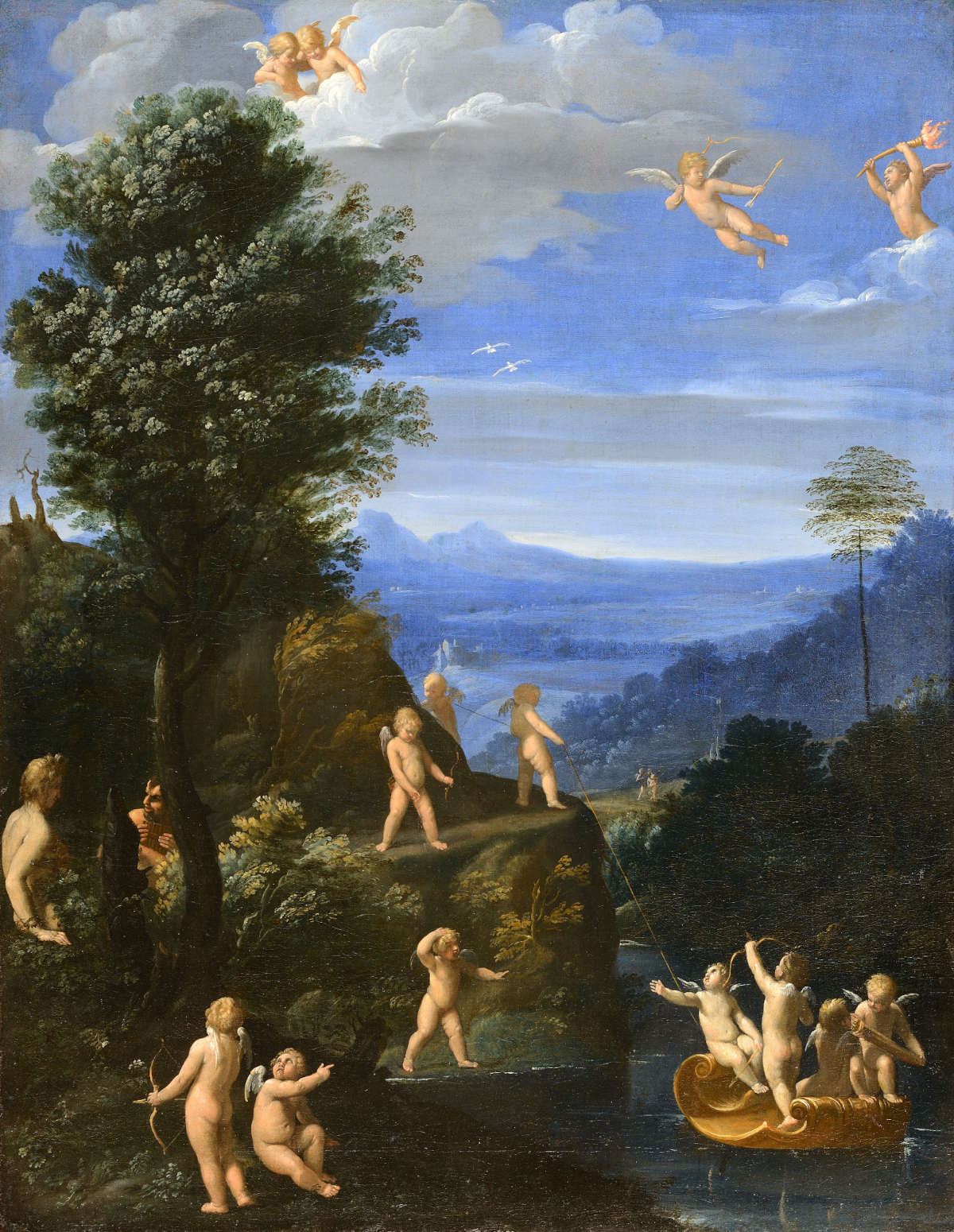
Colnaghi and Benappi share the same booth: the former brings a singular Trionfo di Flora from around 1660, a collaboration between Raffaello Vanni, the greatest exponent of the seventeenth-century Sienese school, an artist who looked up to Barocci, and a specialist like Mario dei Fiori, who fills this triumph with colorful species of all kinds, tulips, roses, anemones, carnations, and a thousand other flowers that his imagination suggested. Benappi, on the other hand, presents an intense St. Jerome by Giovanni de Fondulis, a terracotta from 1475-1480. Antonacci Lapiccirella Fine Art takes a trip to northern Europe: Scandinavian sensations with the spectacular canvas The Snow by Gustaf Fjaestad, a Swedish artist little known in our latitudes but represented at important international museums. Also worth seeing is the beautiful pastel portrait of a young girl by Umberto Boccioni, a rare work. Opposite, the Canesso Gallery, branches in Paris and Milan, brings one of the highlights of the event, a Madonna and Child by Bronzino (1525-1526), which, moreover, returns to the Biennale after a few decades (it was even brought in 1961, at the time, however, attributed to Pontormo). The public was able to see it two years ago at the Donatello exhibition at Palazzo Strozzi. A notified work, so it will not be able to leave Italian territory, it has been the subject of numerous studies. The demand is for a major work: 2.5 million euros. In the same booth, also of interest are Giulio Cesare Procaccini’s Holy Family , a work of very fine quality, Bartolomeo Cavarozzi’s Lamento di Amita for those who love the Caravaggesques (this is one of the best in the exhibition), and Bartolomeo Bimbi’s Teddy Bear. Walter Padovani ’s booth features an important new addition: the Portrait of Pietro Leopoldo I grand duke of Tuscany by Domenico Andrea Pelliccia of Carrara, a 1777 marble that was the subject of a study by Andrea Fusani in 2024.
Continuing our visit on the first floor, Alessandra Di Castro proudly shows us a small wooden Ecce Homo by Andrea Brustolon, a statuette of small size but very fine execution. We then move on into the corridors of Palazzo Corsini where there is no shortage of surprises: one of these is Romanino’s Dead Christ on the Tomb , one of the most interesting pieces in ML Fine Art’s booth, and a little further on Fondantico surprises with a Madonna in Glory with cherubs by Francesco Albani, a fragment of an altarpiece that was in the Church of Jesus and Mary in Bologna until 1799 and dismembered in 1820. At Carlo Virgilio & C. , a fine sheet by Mario De Maria, aka Marius Pictor, a study for the title page of Three Ancient Dances for Piano by Gian Francesco Malipiero in the Bolognese painter’s typical macabre style, is worth a stop. So much seventeenth century at the Altomani & Sons booth: Guido Reni’s Paesaggio con amorini in gioco is another of the best pieces in the entire fair, has an illustrious provenance (it hid a portrait in the secret dressing rooms of Odoardo Farnese and is a work attested as early as 1609), and is notified. Request: 950,000 euros. Also not to be missed, in the same booth, is a San Sebastiano by Guercino, a fine Adoration of the Magi by Spinello Aretino, and another Carrara marble to pay attention to: it is a sketch, dated 1750, for the equestrian monument to Francesco III d’Este, Duke of Modena, signed by Francesco Antonio Casarini known as il Panzetta.
One of the best offerings for the late 19th-early 20th century period at BIAF is what one encounters at the nearby 800/900 Art Studio booth: the Livorno-based gallery squares off a wall full of Lorenzo Viani (and what a Lorenzo Viani: to see works of comparable quality there is only the GAMC in Viareggio, so those who appreciate this extraordinary artist, undervalued by our public museums, should not miss the booth), a couple of interesting Nomellini, a tasty work by a 29-year-old Francesco Gioli(Divertimenti infantili of 1875) and a superlative canvas by Niccolò Cannicci, La benedizione dei campi, which we will have a chance to explore in another article. Also good, in the same genre, was the Swiss Butterfly Institute: highlights included an important Chiacchiere a Riomaggiore by Telemaco Signorini and a couple of works by Giovanni Fattori, as well as a splendid portrait(Riposo) by Cesare Bartolena. Continuing our visit we come to Michele Gargiulo’s booth, one of the best for decorative arts: delightful Miniature Toilet Model, complete with small Bacarat crystal bottles and mother-of-pearl appliqués (15 thousand euros). The most eclectic booth is definitely that of Secol-Art by Masoero: it goes from a still life by Filippo de Pisis to two rare oriental figures in molded stucco (they were parts of the furniture of the Chinese toilets that were fashionable in the eighteenth century), from a polychrome lacquered wood cabinet with chinoiserie motifs to a pair of candlesticks, and there is also a section devoted to comics and cartoons, where a Hugo Pratt canvas stands out. Callisto Fine Art offers a fine female portrait by Giuseppe Molteni, while Roberto Campobasso ’s nearby booth stands out with a Preaching of a Sibyl by Giovanni Paolo Panini. Also worth a close look is Brun Fine Art ’s booth where four pendant canvases by Genovesino, a wall full of gold backgrounds (including a Madonna and Child with Saints Catherine of Alexandria, Baptist, Nicholas and Anthony by Mariotto di Nardo) and a large relief by Arturo Martini stand out.
We go upstairs and, in the Throne Room, we are enchanted as we stroll through Matteo Salamon ’s booth, which brings to Florence one of the most important works in the exhibition: the Portaroli che giocano a carte by Giacomo Ceruti, the only canvas from the Padernello cycle by the Milanese painter left on the market, a notified work. The request is 1.1 million euros to get a piece of great art history. But that’s not the only reason for interest in this booth: also worth seeing are a Nativity by Andrea Previtali, a Crucifixion by Giovanni Antonio da Pesaro, a tondo by Piero di Cosimo, and more. There is also a work by Ceruti at Longari Arte: it is a Portrait of a Clergyman. The Berardi Gallery in Rome exhibits two canvases by Luce Balla, Giacomo’s daughter, and very fine are, from Giacometti Old Master Paintings, some of Raffaello Sorbi’s classic saplings painted on tablets of up to ten centimeters each, some of them previously unpublished. One of the most interesting gold backgrounds is at Romigioli Antichità: it’s a Madonna and Child Enthroned with Angels, a fine work by Lorenzo di Bicci shown in an exhibition in Florence in 2003 (asking: 350 thousand euros). Nearby, Botticelli Antichità brings a Madonna of Humility by Giovanni di Paolo, a unique Madonna of the Book by Cristoforo Mantegazza in Candoglia marble, and a fine Portrait of a Gentlewoman with Daughter by Santi di Tito. Before heading to the terrace and sipping a glass of wine while gazing at the Arno, it’s a good idea to stop by Flavio Gianassi FG Fine Art , which stands out as one of the most fascinating offerings at the event: Deserving a long stop at the Tuscan (but London-based) antiquarian are Gian Lorenzo Bernini’s four screaming grotesque heads, four elements of his chariot, visible in Italy only in 1962 at Palazzo Strozzi in an exhibition on Renaissance bronzes and always remaining in the family of Bernini’s heirs (we will discuss them more extensively in another article), and a beautiful shaped Crucifix by Giovanni da Rimini, which was displayed at the great exhibition on 14th-century Rimini painting in 1935 and, more recently, at the exhibition L’oro di Giovanni held in Rimini in 2021 (we had also discussed it in our in-depth article on the Mercatello Cross, by the same author): the request for this cornerstone of the fourteenth century in Romagna is 190,000 euros.
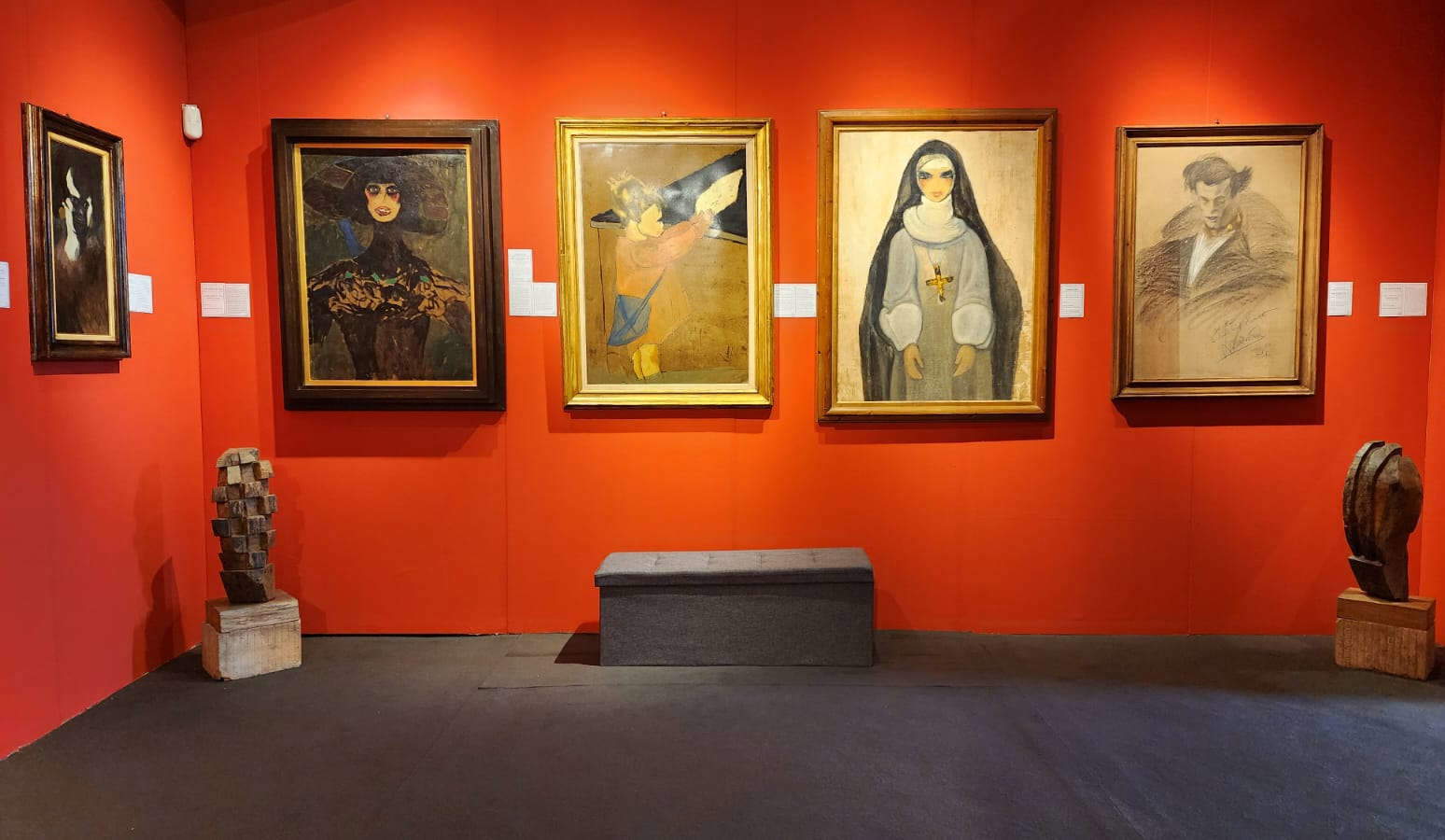

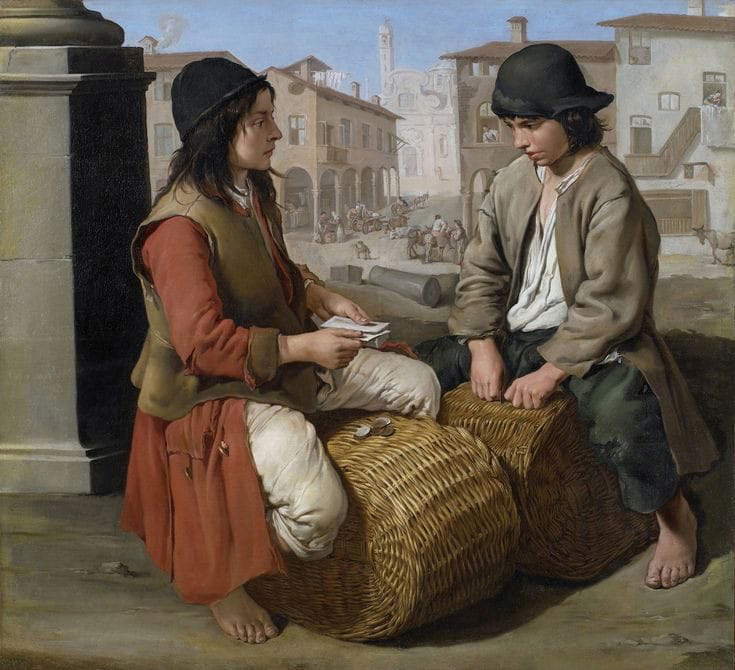
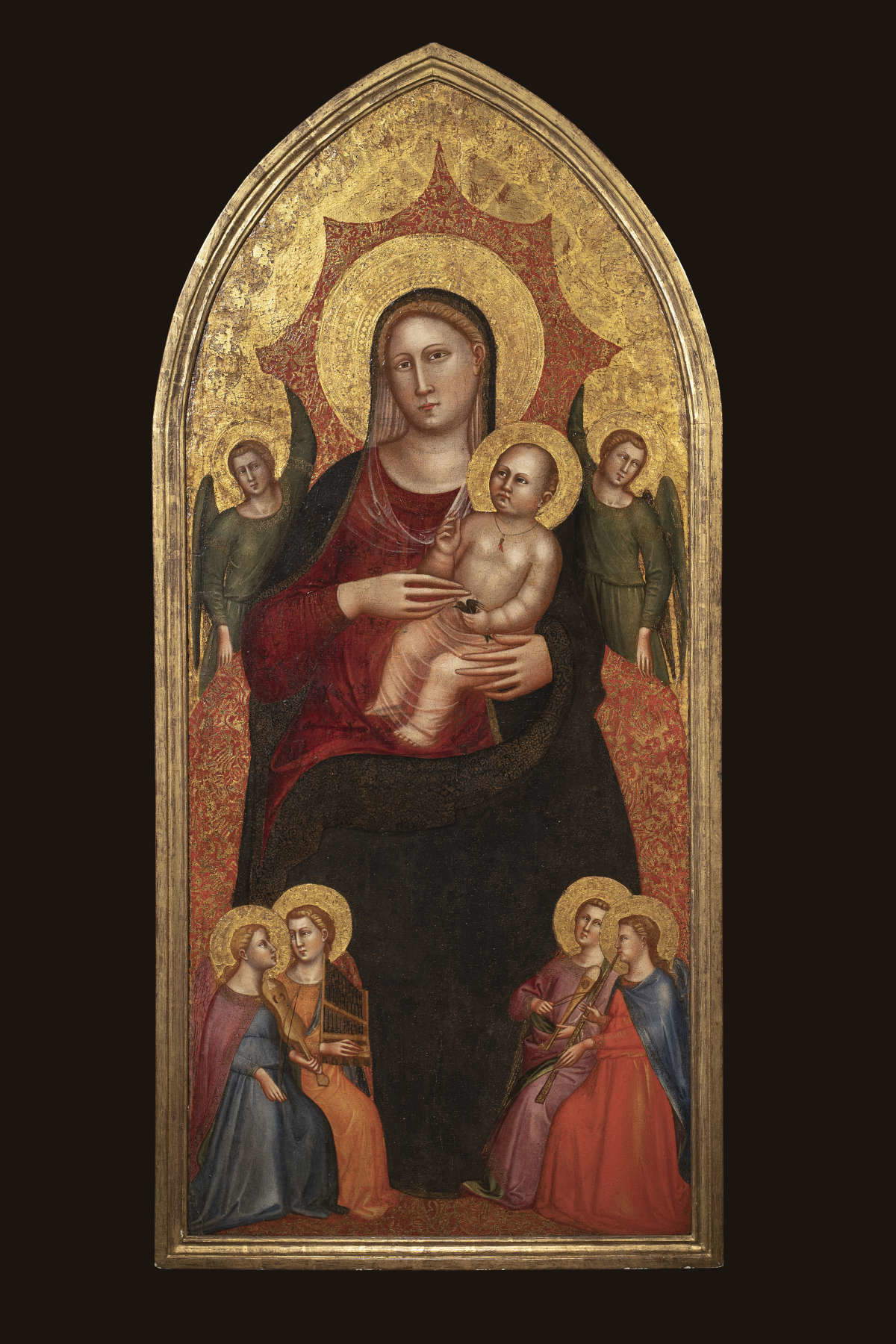
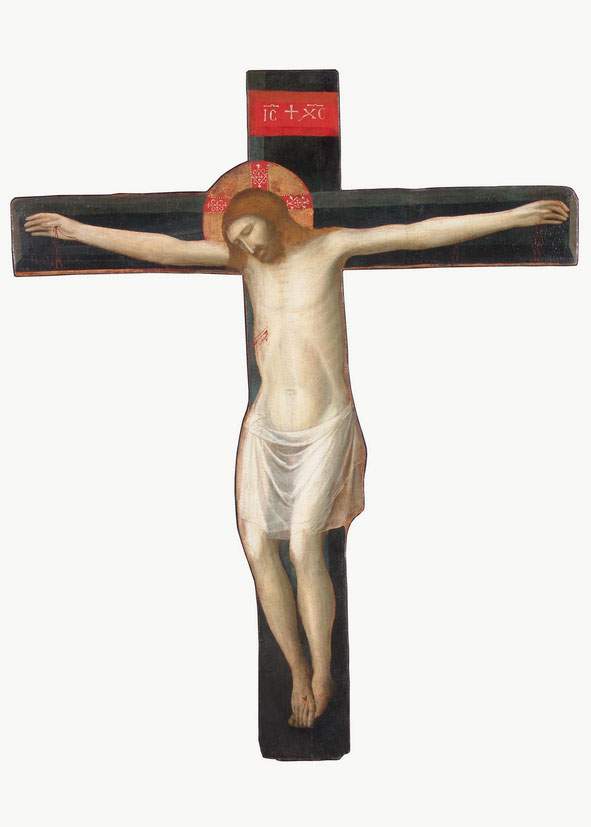

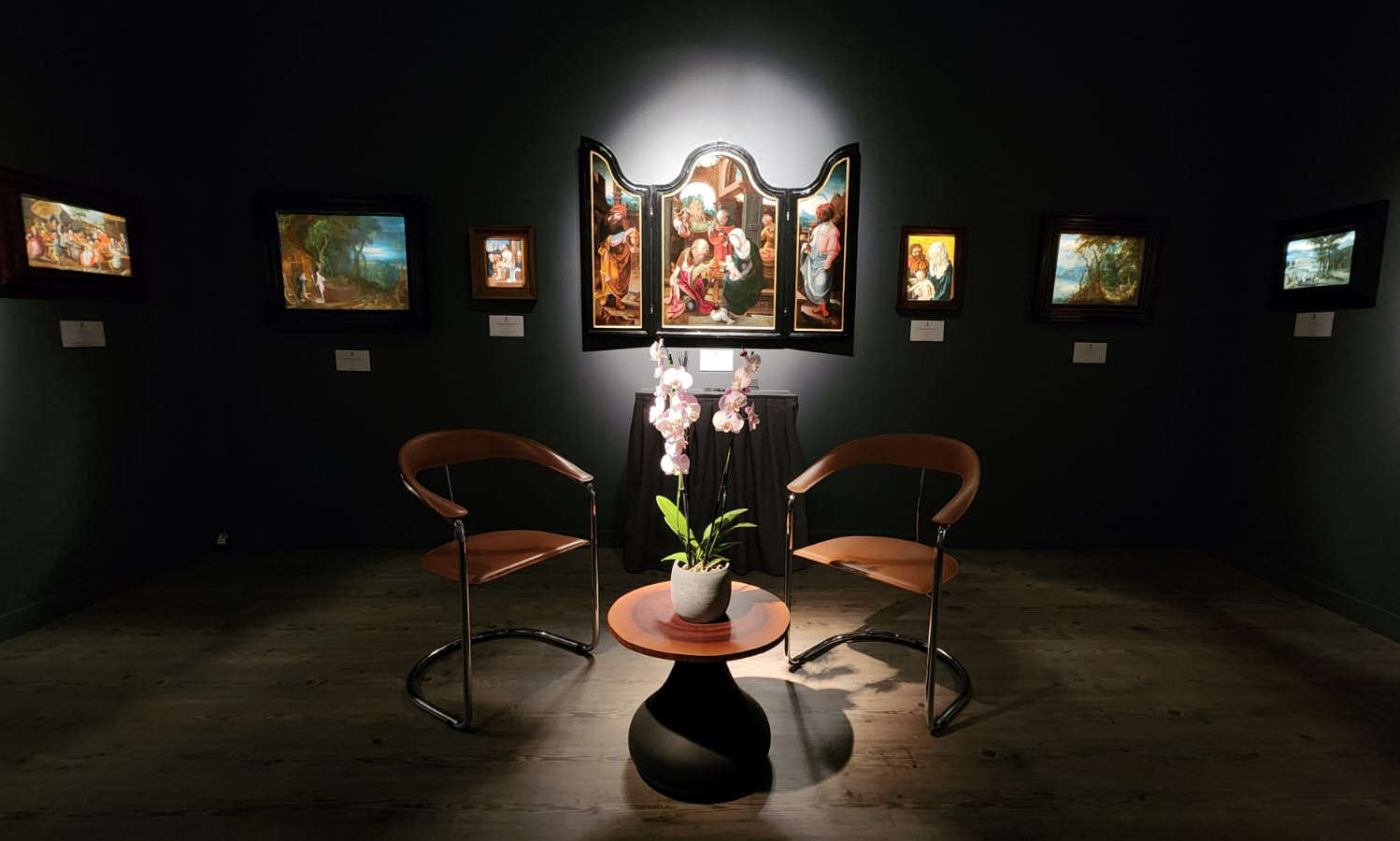

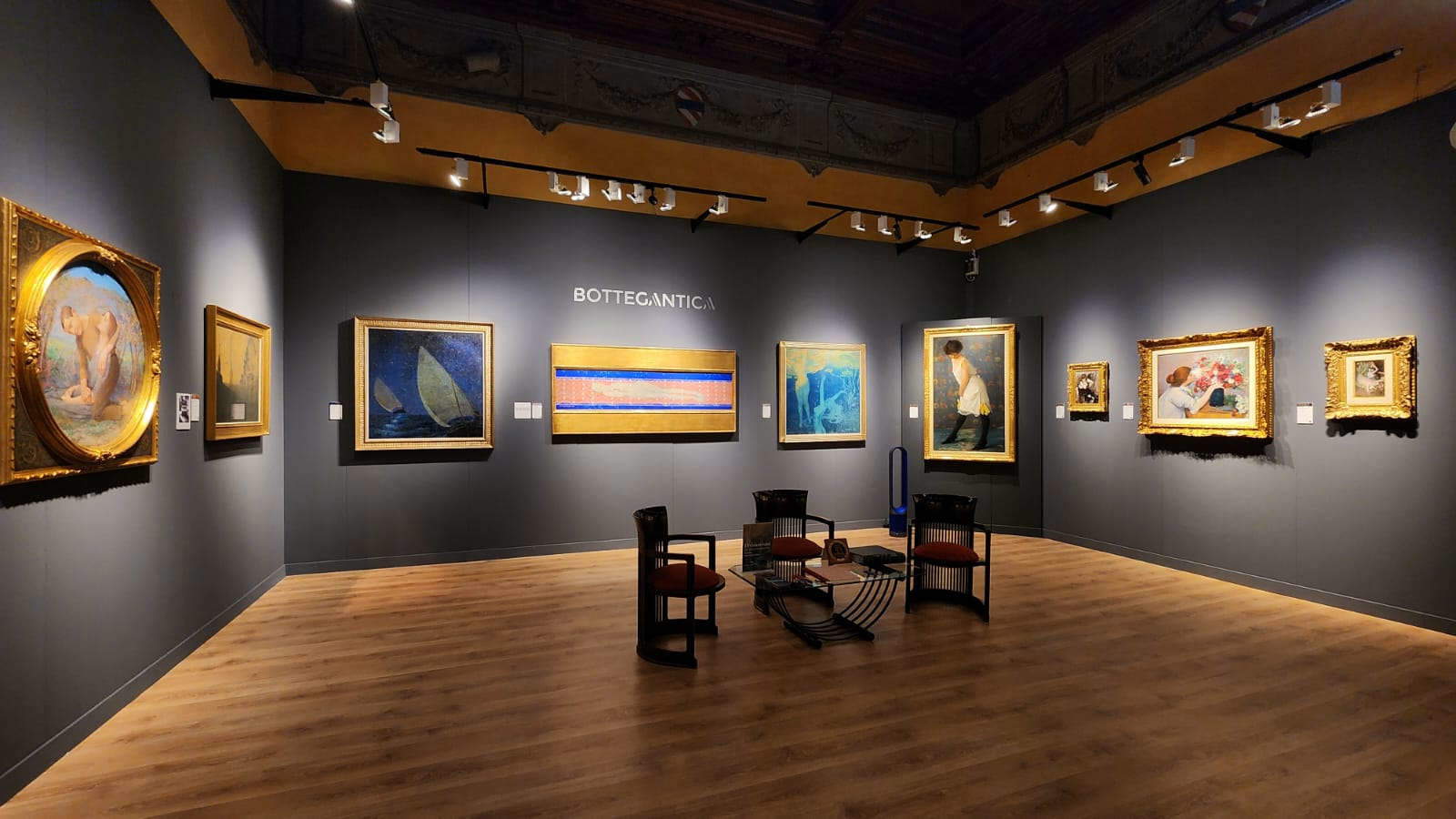
Frediano Farsetti Art Gallery ’s booth evokes atmospheres of early 20th-century Paris with an exhibition on the Italians who worked there and at that time: Alberto Savinio, René Paresce, Mario Tozzi, Massimo Campigli, Gino Severini and Giorgio de Chirico. Enrico Gallerie d’Arte presents a top-quality selection of early 20th-century Northern Italian art : a landscape by Giuseppe Pellizza da Volpedo, one by Carlo Fornara, and Angelo Morbelli’s melancholy Last Moves . Immersion in the world of high-quality decorative arts at Robertaebasta , which offers, among the most significant pieces, a Turcata by Aldo Mondino and a lamp by Gabriella Crespi, Kaleidoscope, circa 1970. The Turin gallery Caretto&Occhinegro is synonymous with high-end Flemish art, and the two young antiquarians bring to Florence pieces one better than the other: not to be missed David Vinckboons’s The village kermesse (more on this in another focus), a very modern Landscape with wayfarers by Sebastian Vranckx, a St. Jerome by Ambrosius Benson (who was actually from Lombardy and named Ambrosius Benzone, but his art has very little Lombard in it), a luminous Holy Family by the Master of the Adoration of Antwerp. Continuing toward the finale, very interesting are the animals on paper by Duilio Cambellotti proposed by Paolo Antonacci, as well as another but older animal, a Bat Study attributed to José de Ribera. An excellent finale with Bottegantica’s early 20th century: evocative The Daughters of the Rhine by Glauco Cambon, spectacular the charcoal of about 1903 by Giuseppe Pellizza da Volpedo(Sunset on the Hills of Volpedo), suitable for a more leisurely collecting the Pagliai by Giovanni Boldini. Before leaving for good, however, the last booth, Giorgio Baratti Antiquario, deserves to be visited, with the two curious oils on glass by Luca Giordano, a pair of putti in Carrara marble attributed to Donatello and collaborators, the immoderate mermaid-shaped console table executed to a design by Giovanni Battista Foggini, and a relief by Gregorio di Lorenzo, a Madonna and Child in marble, a notified work.
The Florence Biennale Internazionale dell’Antiquariato thus confirms itself as one of the most prestigious events on the world art scene, thanks to the quality of the works on display, behind which there are in-depth studies, research, appraisals and expertise that offer the market rare works in excellent condition. All of this is screened by a Vetting Committee that for this 33rd edition of BIAF is composed of 55 experts in the various fields (paintings, sculptures, ceramics, furniture, drawings, silverware) and as always has worked to analyze each piece in the exhibition before it opens its doors to the public.
This event, rooted in Florence’s long tradition of art, not only offers collectors the chance to buy the best on the market, but also gives visitors the opportunity to admire works that are otherwise rarely seen. In 2022, 25,000 visitors crowded the rooms of Palazzo Corsini: an even higher turnout is expected this year. A meeting point for experts in the field, a vital platform for the enhancement and rediscovery of our cultural heritage, an opportunity to discover the latest innovations, the BIAF, again this year, will not fail to meet expectations.
Warning: the translation into English of the original Italian article was created using automatic tools. We undertake to review all articles, but we do not guarantee the total absence of inaccuracies in the translation due to the program. You can find the original by clicking on the ITA button. If you find any mistake,please contact us.





























